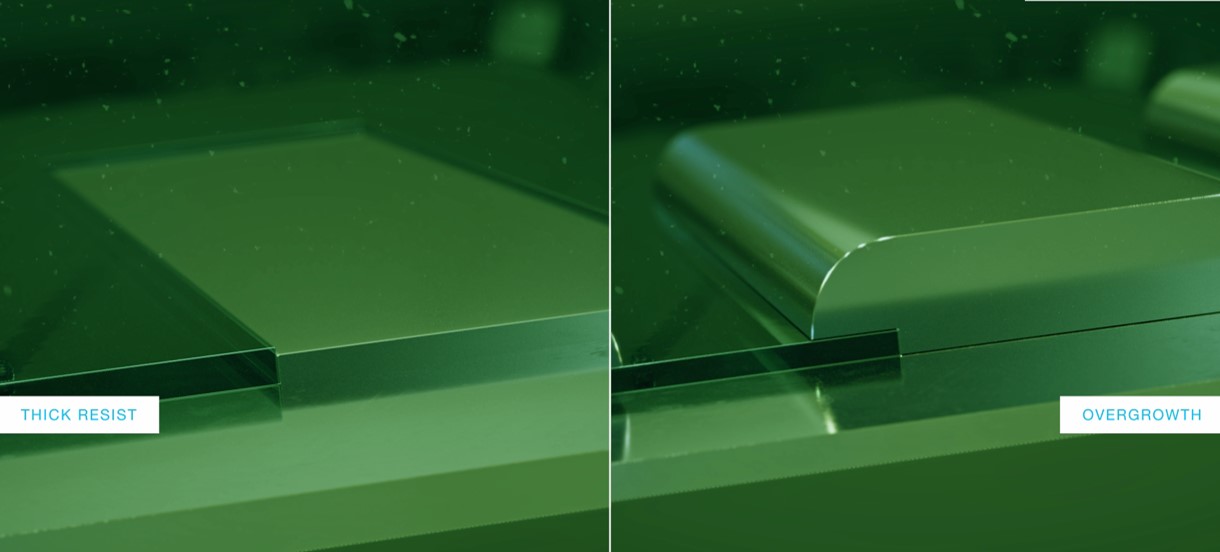Electroforming vs. 3D Printing: What's the Difference?
Jan 23, 2019 12:27:27 PM By Hua FanElectroforming and 3D Printing are both additive manufacturing processes. Whereas Electroforming builds up precision metal parts atom by atom, 3D Printing works by applying materials in droplets through a small diameter nozzle and “print” layer by layer to build up the product. So what's the difference of these two precision manufacturing techniques? This blog will review on Cost Efficiency, Lead Time, Design Complexity, and Quality/Accuracy.
Electroforming vs. 3D Printing
(1) Cost Efficiency
A 3D printer and its corresponding materials can be cheaper than electroforming equipment, so 3D Printing seems more cost-effective when
you want to create just a small amount of products yourself in-house. When you are going for industrial scale production, however, the higher the volume, the more favourable Electroforming becomes.
(2) Lead Time
3D Printing of metal parts is still in its infancy. The technique entails printing with minuscule
metal powdered parts. After printing, the metal needs to be heated (sintered) in order to suture. In addition to the time-consuming sintering process, the printed layers also need to dry so that they don’t sag. These two steps both take a considerable amount of time, which
makes 3D Printing a relatively slow procedure for fabricating metal parts. Additionally, 3D Printing can only deal with one part a time. Electroforming, on the other hand, is much
faster a process, during which you can grow a large number of parts simultaneously (in one
electrolytic bath).
(3) Design Complexity
Electroforming allows for great design flexibility as it requires almost no tooling investment and that it has a very short lead time. With regard to material, however, Electroforming mainly works with nickel and copper. For medical applications, for instance, nickel components can be coated with a layer of a PdNi alloy. 3D Printing also allows for high level of design flexibility and range of material usage are much wider.
(4) Quality/Accuracy
Electroforming allows you to grow material on a micro scale, resulting in absolute accuracy and high aspect ratios. The standard deviation of electroformed parts is less than 1% of the material’s thickness. Orifices of just a couple of microns are no exception. 3D Printing can currently achieve 100 micron range of precision at its best. The technique can be 100 times less precise than electroforming.
Compared to 3D Printing, Electroforming has higher accuracy, shorter lead time, and better cost efficiency especially when it’s large volume. 3D Printing allows for better design flexibility mainly due to the fact that it works with a wider range of materials.
Interested to learn more details of Electroforming? Download the Whitepaper Electroforming here:
Video: Electroforming vs. 3D Printing
In this video, Harrie Knol, Head of Application Engineering at Veco, compares the two popular Additive Manufacturing techniques: Electroforming & 3D Printing.
Full Transcript Below:
Welcome to our first Knol-edge video of 2018. Today we want to make a little comparison between 3D printing and electroforming. Electroforming is quite an old technology already, it's done by Veco for more than 80 years. 3D printing is quite new, it's evolving very fast, it's quite popular especially under the young engineers, and not without reason.
3D printing is mainly used for rapid prototyping, complex shapes like gearboxes, but not yet in high volumes. This may be the main difference with electroforming. Electroforming, also possible in 3D; for example bellows, cylinders, for textile printing, optical lenses, they can be made in a three dimensional shape.
But at Veco, we mainly manufacture electroformed precision parts in two dimensional shape. Flat shapes like shaver foils, inkjet nozzles, encoder discs, or whatever. Sometimes we call it 2.5D, but then we are combining layers for example for an inkjet nozzle plate where we combine the inkjet chamber together with a nozzle plate calling it 2.5D.
With 3D printing more and more materials become available. Even polymers are possible. That's not possible with electroforming. With electroforming there are some restrictions on the type of materials that can be used. Most of the materials most of the time are made in nickel, nickel cobalt, palladium, palladium nickel, gold, these type of materials, but not possible in polymers.
3D printing is done layer by layer, or droplet by droplet. Electroforming is done atom by atom and therefore electroforming is much more accurate with tolerances down to one micron, where 3D printing still is in field of say 10-20 micron tolerances. 3D printing is a complementary technology over our electroforming technology. I don't think it will be a threat due to the mass production that we already achieved and the very accurate tolerances that we can achieve, but there will be some very exciting developments in the near future.
To learn more about the Electroforming technology and its applications, download the Electroforming Whitepaper here.
